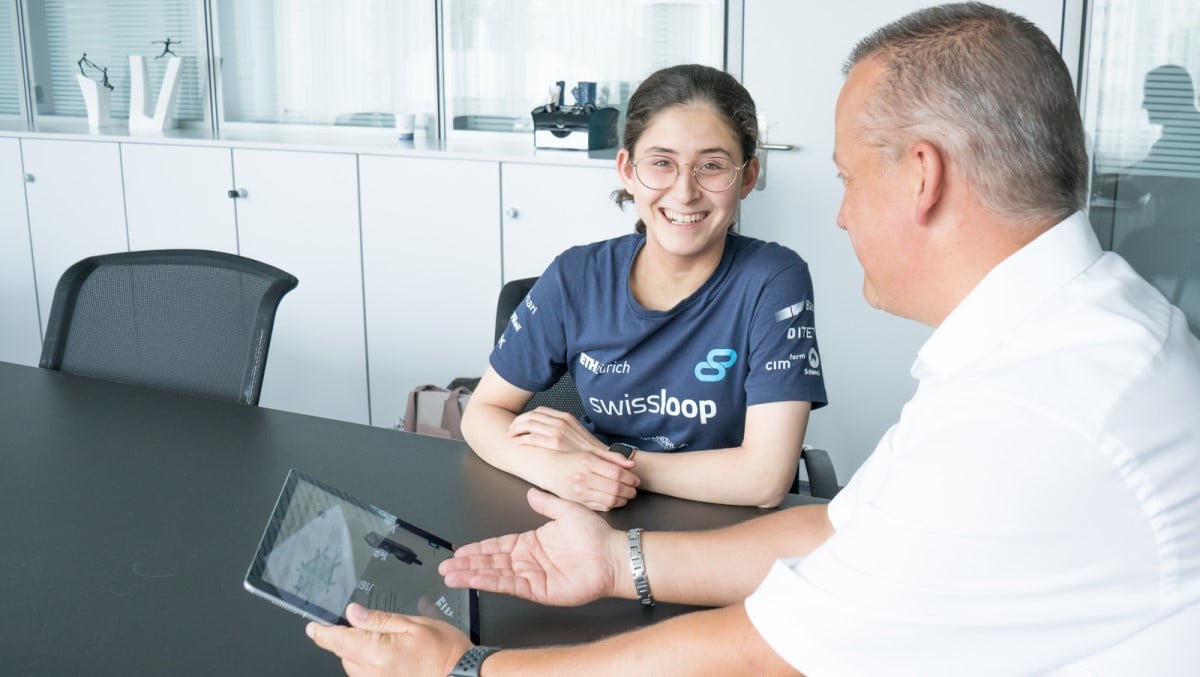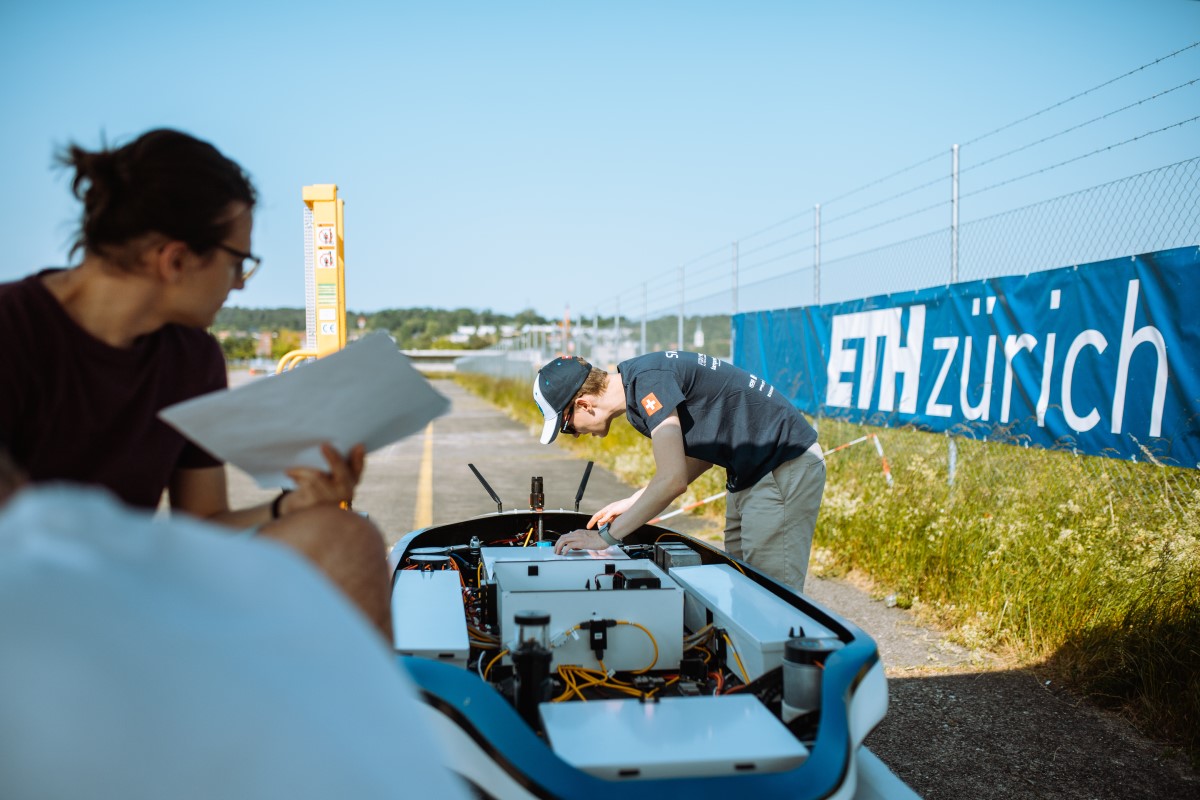2023. 7. 10
Baumer x Swissloop - Contribution 3/4: Testing phase

Interview questions for Lina De Windt (electrical engineer)
Today we are talking to Lina De Windt. She studies electrical engineering at the ETH in Zurich and is an electrical engineer in the Swissloop team.
Dear Lina...
You recently tested your newly developed pod. As an outsider, how can one imagine this project phase - what happens there?
The previous project phase, testing the newly developed pod, required a lot of careful planning, coordination and execution. As a first step, all subsystems had to be tested individually for their functionality before everything could be built into the pod. The team then tested the various aspects of the pod's functionality, including communication between the different subsystems, correct signal relay in the event of a failure, and the braking systems. The team carefully evaluated the data gathered during the tests to identify any problems or areas for improvement, but most importantly to ensure that the Pod met all the required safety standards. Overall, this phase of the project required a lot of hard work, an eye for detail and close collaboration to ensure the pod was safe, reliable and effective.
What components and elements did you pay particular attention to during testing? What role did the Baumer sensors play?
During testing, we paid special attention to the functioning of various critical components and elements of the pod, such as the propulsion system, the braking system, the levitation system, the power electronics and the safety elements. Baumer sensors played an important role in this testing process as they provide accurate and reliable data on the position, force and pressure of the individual subsystems. This data is very important for us, as it provides information about the speed and acceleration of the pod, among other things. By providing real-time data on these functions, the team can ensure that the pod is functioning correctly and providing the required level of protection for the pod and its environment.

What challenges did you anticipate for the testing phase?
There were several challenges we anticipated during the testing phase of our pod. For example, one of the main concerns during the testing phase was ensuring the safety of the test track and the team involved in the testing process. This can be particularly challenging with our pod as it is under high voltages and currents and moving at high speeds. In addition, the complexity of the Pod's systems and the testing procedures themselves can lead to technical difficulties that can slow down the testing process. Furthermore, the pod must meet various standards set by the EHW-jury before it can be approved for operation. Ensuring compliance with these standards is a complex and time-consuming process.
What is your specific role as an electrical engineer?
As an electrical engineer on the Swissloop team, primarily responsible for the pod's power systems, my specific role in the testing phase depended on the specific needs of the team and the progress of the software engineers. There were days when I planned, documented and prepared tests. But then there were also days when I was busy soldering and debugging, as we design and solder together all our PCBs ourselves. In the assembly phase, I discovered that I have a good flair for soldering and debugging, so it became so established that I also did this work on most of the other subsystems, so that those electrical engineers working on the software could spend a bit more time on it. Then, of course, there were the days when we ran the carefully planned tests, and that's when I was asked to operate the power equipment, check the operation of the system and ensure the safety of everyone involved in the test.
Did you divide the activities around testing within the team? If so, what roles have you defined?
Basically, everyone is responsible for their own subsystem. This year we have split up in such a way that one full-time engineer is responsible for the drive, the levitation system, the power electronics, the structure, the brakes and the rails, the vehicle control, the batteries and the electrical integration. But in the assembly and test phase we help each other a lot, and it can also be the case that half of the team is working on a particular subsystem or test. Everyone is very flexible and helpful, and they all pitch in where help is needed most.
Have you divided up the activities around testing in the team? If so, what roles have you defined?
Basically, everyone is responsible for their own subsystem. This year we have split up so that one full-time engineer is responsible for the drive, the hover system, the power electronics, the structure, the brakes and the rails, the vehicle control, the batteries and the electrical integration. But in the assembly and test phase, we help each other a lot, and it can also be the case that half of the team is working on a particular subsystem or test. Everyone is very flexible and willing to help out where help is needed most.
You have always said how important teamwork and team spirit are for your project. Defeats are also part of testing. How do you deal with them as a team in order to master this phase successfully?
Dealing with defeats and challenges is an important aspect of the testing phase, and a strong team spirit is crucial for successfully overcoming them.
In this phase, it is even more important that we communicate openly together. We schedule regular team meetings, brainstorming sessions and debriefings after test failures that allow all team members to voice their concerns, share ideas and discuss possible solutions to challenges or defeats. We see defeats as learning opportunities and take time to analyse them thoroughly and develop strategies to fix them or improve the approach. This sometimes includes flexibly adapting test plans. Of course, defeats are not easy to overcome. But by supporting and helping each other, celebrating even small successes and recognising individual and team achievements, we boost team morale and stay motivated to achieve our big goals.
What moment will you remember most about testing?
One highlight that I will definitely remember is the moment when we successfully piloted the engine for the first time. It was great how we pressed the "go" button and it finally worked. But I will also remember all the hard work we did until we reached that moment.
The moment when the pod picked up speed for the first time was always described as a "hooray moment". Was the bottle of champagne already chilled or how do you celebrate? :-)
Of course, we had not just one, but several bottles of champagne on ice ;) The moment was certainly very formative and great for all the people involved, when after months of hard work we got the Pod up and running as a whole for the first time. But we didn't have much time to celebrate, because even after the first crawl, there are still many milestones to master in the remaining few weeks of the project year until the competition at the European Hyperloop Week - the speed of 80km/h and hovering in all directions, to mention the most important ones.
"We thank Lina for the in-depth interview and the time she took to answer our questions. We are excited and look forward to continuing to support the project."